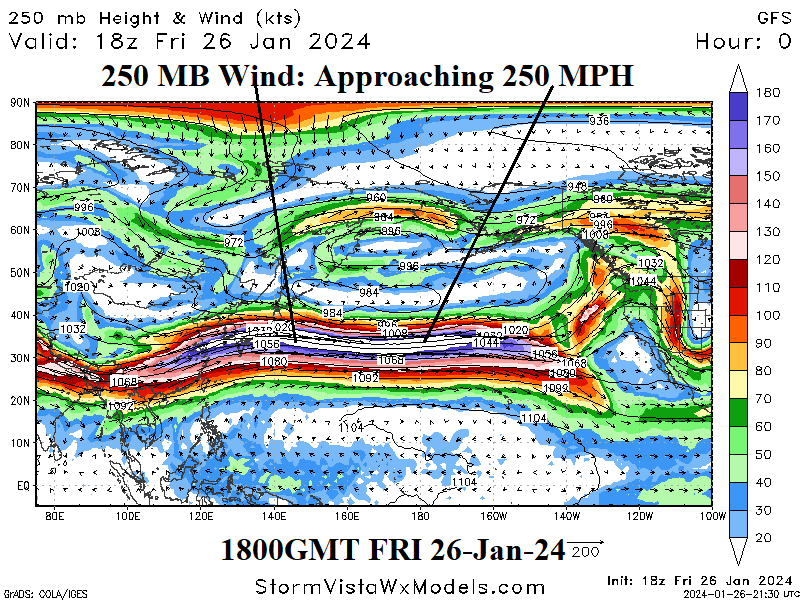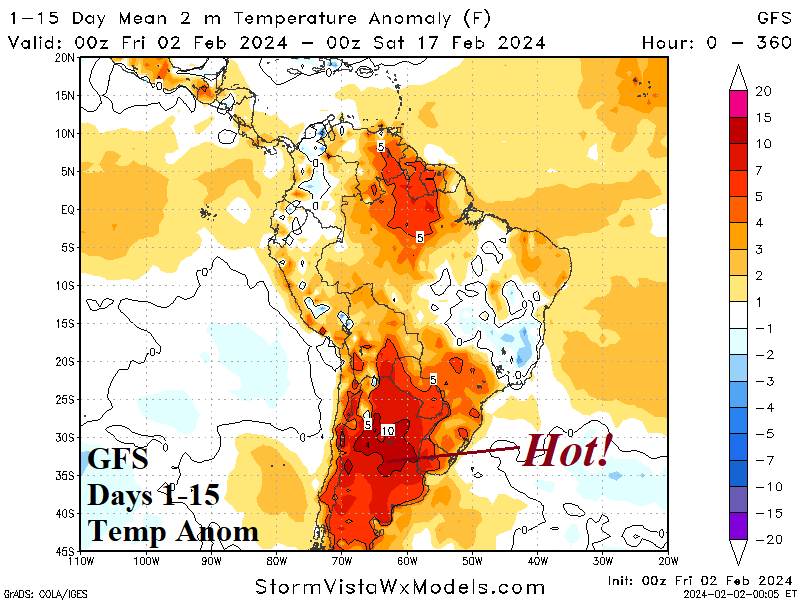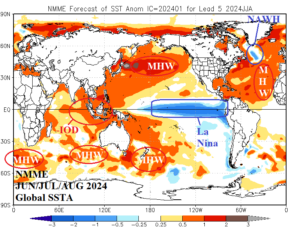
Super-Fast Jetstream Across Pacific Propelled by Madden Julian Oscillation
01/28/2024, 1:22 pm EST
Argentina Dryness Becoming Severe
02/02/2024, 9:37 am ESTDiscussion: During January 2024, upper ocean heat across the equatorial Pacific Ocean plummeted. The Pacific basin upper ocean heat anomaly has slipped below the El Nino threshold (Fig. 1). East of the Dateline, waters in the upper 75 meters of the ocean remain robust warm and supportive of El Nino. However, deep layer (75-300 meters) equatorial West to East-central Pacific Ocean upper ocean heat has cooled dramatically while expanding eastward and that trend is continuing. If the rate of cooling continues at a similar rate, El Nino will end by APR/MAY and La Nina could develop during northern hemisphere meteorological summer as indicated by the North America multi-model ensemble (Fig. 2). The NMME forecast also indicates the Indian Ocean Dipole (IOD) flips from the just-ending positive phase to the negative phase by JUN/JUL/AUG 2024. So, potentially, a flip in the ENSO/IOD regime from positive new negative phase is possible within 6 months. Several marine heat waves (MHW) remain during the southern hemisphere winter although weaker while MHW episodes in the northern hemisphere strengthen dramatically. The North Atlantic warm hole (NAWH) re-emerges during northern hemisphere summer to the south of Greenland.

Fig. 1: The running 12-month upper ocean heat anomalies across the equatorial Pacific Ocean.

Fig. 2: The NMME global SSTA forecast for JUN/JUL/AUG 2024.
![Climate-Impact-Company-logo-sm[1]](https://climateimpactcompany.com/wp-content/uploads/2023/08/Climate-Impact-Company-logo-sm1.png)
